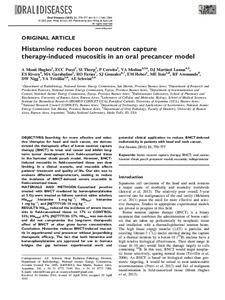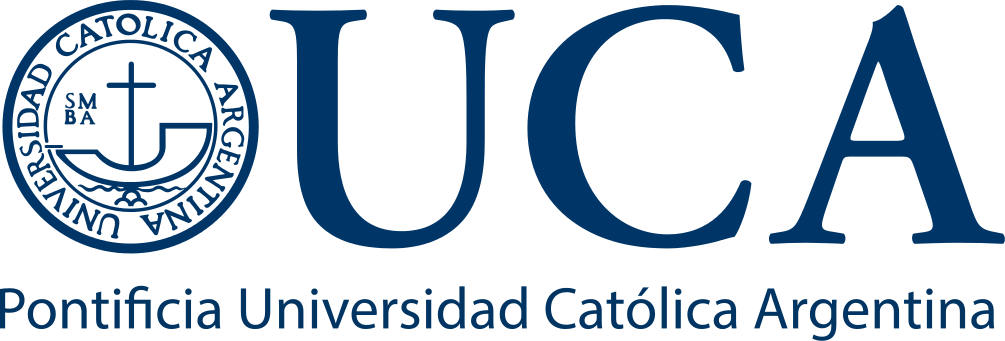Please use this identifier to cite or link to this item:
https://repositorio.uca.edu.ar/handle/123456789/14305| Título: | Histamine reduces boron neutron capture therapy-induced mucositis in an oral precancer model | Autor: | Monti Hughes, Andrea Pozzi, Emiliano C. C. Thorp, S. I. Curotto, P. Medina, Vanina Araceli Martinel Lamas, Diego José Rivera, Elena S. Farías, R. O. González, S. J. Heber, Elisa M. Itoiz, María E. Aromando, Romina F. Nigg, David W. Trivillin, Verónica A. Schwint, Amanda E. Garabalino, Marcela A. |
Palabras clave: | HISTAMINA; RADIOTERAPIA; CANCER; ESTOMATITIS | Fecha de publicación: | 2015 | Editorial: | Wiley | Cita: | Monti Hughes, A., et al. Histamine reduces boron neutron capture therapy-induced mucositis in an oral precancer model [en línea]. Oral Diseases. 2015, 21 doi:10.1111/odi.12346 Disponible en: | Resumen: | Abstract: OBJECTIVES: Searching for more effective and selective therapies for head and neck cancer, we demonstrated the therapeutic effect of boron neutron capture therapy (BNCT) to treat oral cancer and inhibit longterm tumor development from field-cancerized tissue in the hamster cheek pouch model. However, BNCTinduced mucositis in field-cancerized tissue was dose limiting. In a clinical scenario, oral mucositis affects patients’ treatment and quality of life. Our aim was to evaluate different radioprotectors, seeking to reduce the incidence of BNCT-induced severe mucositis in field-cancerized tissue. MATERIALS AND METHODS: Cancerized pouches treated with BNCT mediated by boronophenylalanine at 5 Gy were treated as follows: control: saline solution; Hishigh: histamine 5 mg kg 1 ; Hislow: histamine 1 mg kg 1 ; and JNJ7777120: 10 mg kg 1 . RESULTS: Hislow reduced the incidence of severe mucositis in field-cancerized tissue to 17% vs CONTROL: 55%; Hishigh: 67%; JNJ7777120: 57%. Hislow was non-toxic and did not compromise the long-term therapeutic effect of BNCT or alter gross boron concentration. Conclusion: Histamine reduces BNCT-induced mucositis in experimental oral precancer without jeopardizing therapeutic efficacy. The fact that both histamine and boronophenylalanine are approved for use in humans bridges the gap between experimental work and potential clinical application to reduce BNCT-induced radiotoxicity in patients with head and neck cancer. | URI: | https://repositorio.uca.edu.ar/handle/123456789/14305 | ISSN: | 1354-523X | Disciplina: | MEDICINA | DOI: | 10.1111/odi.12346 | Derechos: | info:eu-repo/semantics/closedAccess | Fuente: | Oral Diseases. 2015, 21 |
| Appears in Collections: | Artículos |
Files in This Item:
| File | Description | Size | Format | |
|---|---|---|---|---|
| thumb.pdf | 175,59 kB | Adobe PDF |  View/Open | |
| histamine-reduces-boron.pdf | 371,64 kB | Adobe PDF | Request a copy |
Page view(s)
108
checked on Apr 27, 2024
Download(s)
81
checked on Apr 27, 2024
Google ScholarTM
Check
Altmetric
Altmetric
This item is licensed under a Creative Commons License

